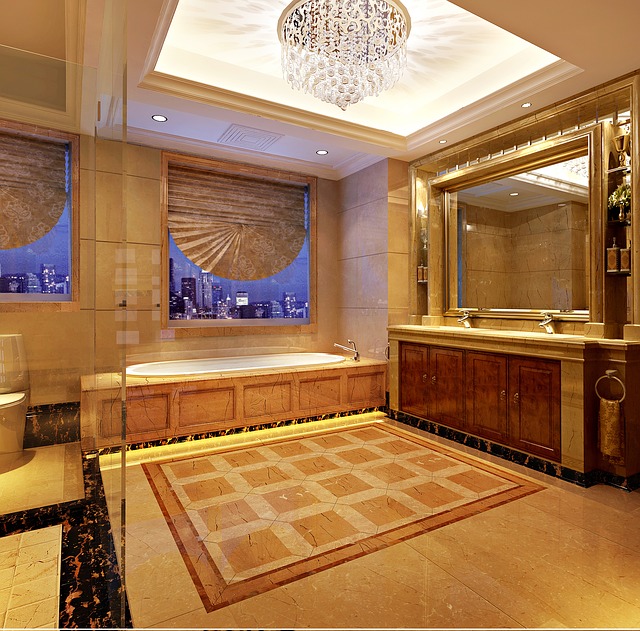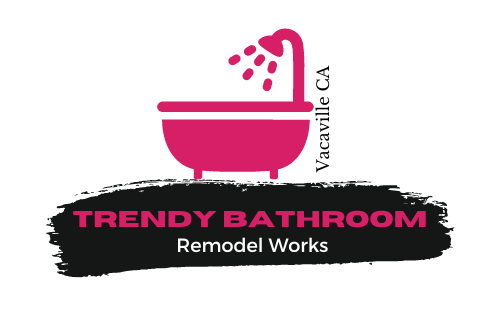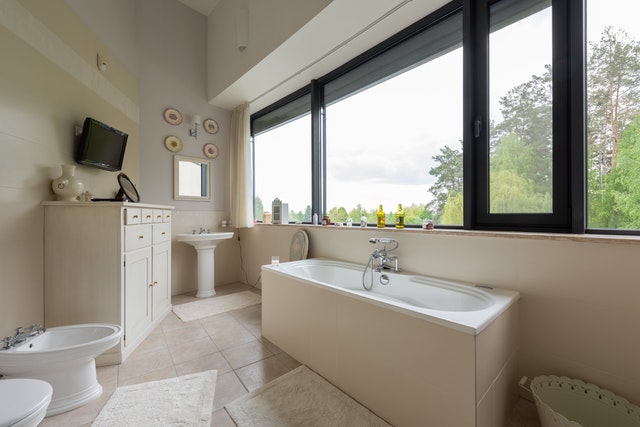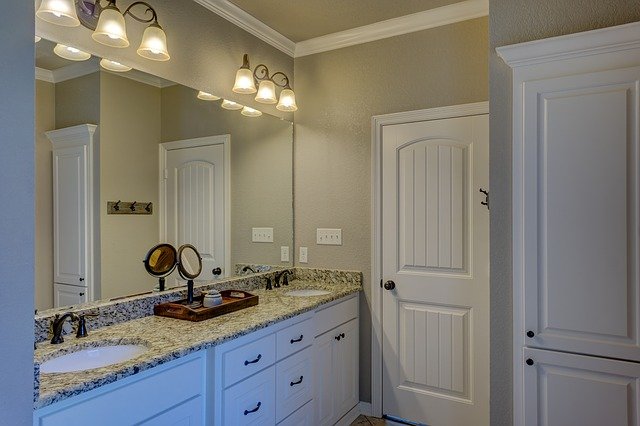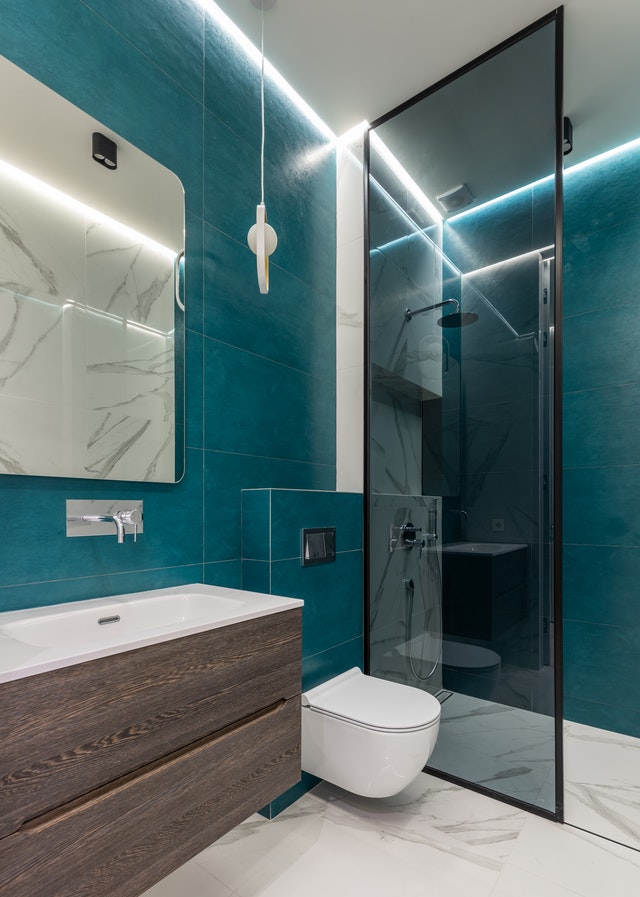How much do you need?
In all but the tiniest of bathrooms, ceiling-mounted lamps are necessary for sufficient general illumination. A good choice is recessed lighting. How much you need. Of course, depends on the size of the room. If the bathroom is less than 100sq. ft., one fixture is sufficient. Add another fixture for each additional 50 sq. ft. If the surfaces around the room are light-absorbing dark hues, such as mahogany-stained cabinets, deep-colored walls, or black granite countertops, you may have to compensate with stronger lamps. If the bulbs you are using are not providing enough general light, you need to substitute them with ones that have more lumens, not with higher-wattage bulbs. The next time you shop for bulbs, read the packaging, which indicates the lumens per watt (LPW) produced by a bulb.
Lighting for mirrors
You’ll need even, shadow-free lighting for applying makeup shaving or caring for hair it should illuminate both sides of the face under the chin, and the top of the head. Plan to use at least 20 incandescent watts. Never aim lighting into the mirror. Decorative scones installed on either side of a small mirror at face height do the job nicely. Place them no higher than 60 in. above the floor and at least 28 in but not more than 60 in apart, unless you pair them with another vanity light source.
If florescent side lights are mandated by your local code, use the deluxe warm. white fluorescent bulbs that more close resemble natural light. Install them up to 48 in. apart for sufficient lighting and supplement them with recessed or surface/mounted ceiling fixtures. A large mirror used over a double vanity will require a different approach: treat each lav as a separate task area and light each one
Lighting for tubs and showers
Light around the tub and shower area has to be bright enough for safety and grooming. Adjusting water temperature or showerheads and reading (if you care to read while you soak in the tub). Recessed downlights or any other fixtures designed glare, and shatter-resistant white acrylic diffusers are the safest. Any light fixture installed in a wet or damp area has to be protected property so that water cannot accumulate in wiring compartments, lamp holders or other electrical parts. Your professional electrician will know how to handle the situation and can recommend the proper light fixture.
Types Of Bulbs
Here’s a description of the most common types of bulbs and their advantages and disadvantages.
Incandescent. Like sunlight, incandescent bulbs emit “continuous spectrum light,” or light that contains every color. Illumination from these bulbs, in fact, is even warmer than sunlight, making its effect very appealing in a room. It makes our skin tones look good and even enhances our feeling of well-being. The drawbacks to incandescent bulbs are that they use a lot of electricity and produce a lot of heat. However, they come in a variety of shapes, sized, and application. (One type features a waterproof lens cover that makes it suitable for over a tub or inside of a shower.) These bulbs can be clear, diffuse, tinted, or colored, and they may have a reflective coating inside.
Fluorescent. These energy-efficient bulbs cast a diffuse, shadow less light that makes them great for general illumination. They are very energy efficient, but the old standard fluorescents are quite unflattering, making everything and everyone appear bluish and bland. Newer warm-white fluorescent bulbs render color in a way that more closely resembles sunlight. Fluorescents are available both in the familiar tube versions and in compact styles. In some parts of the country, local codes require florescent lights to conform to energy conservation mandates.
